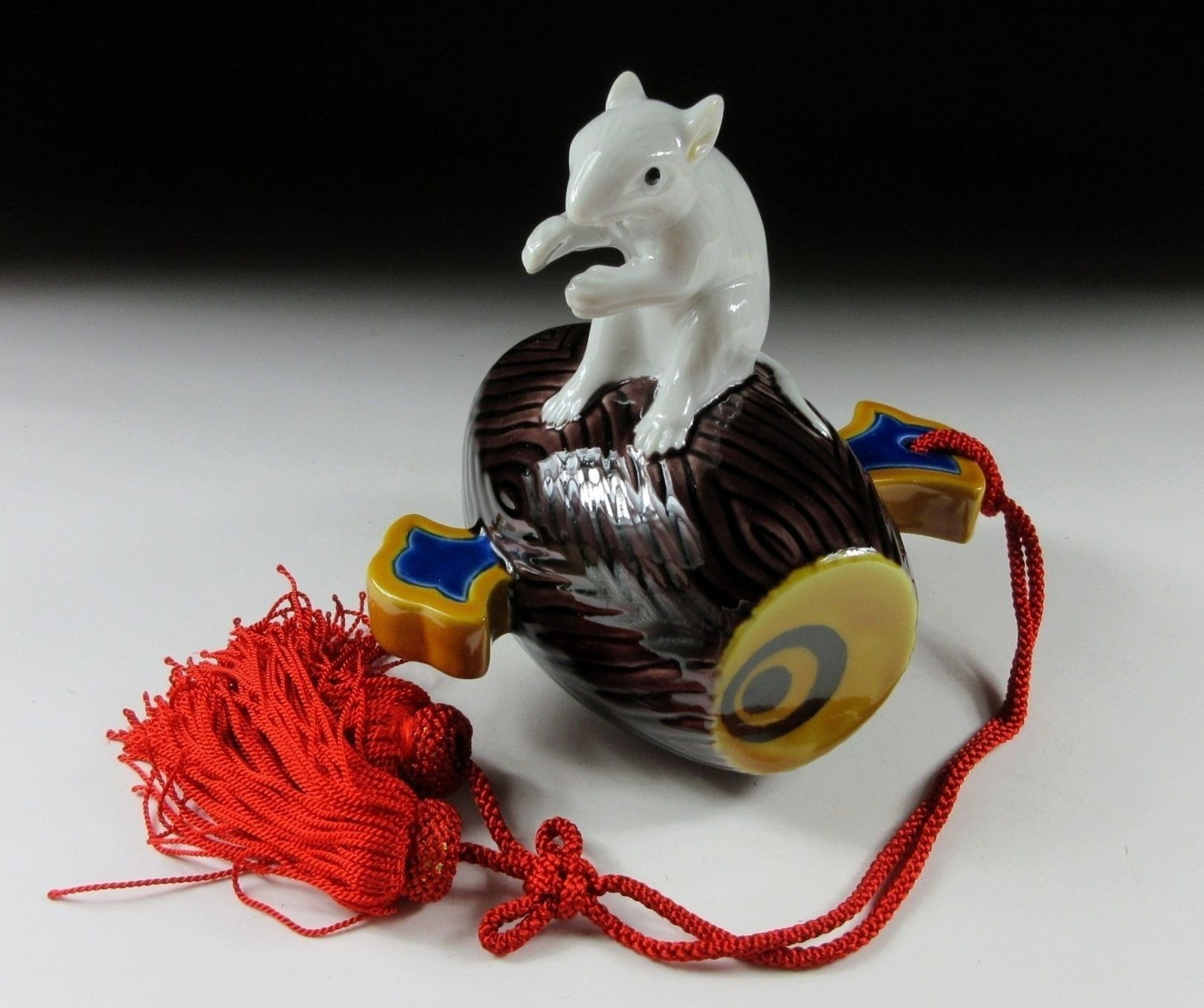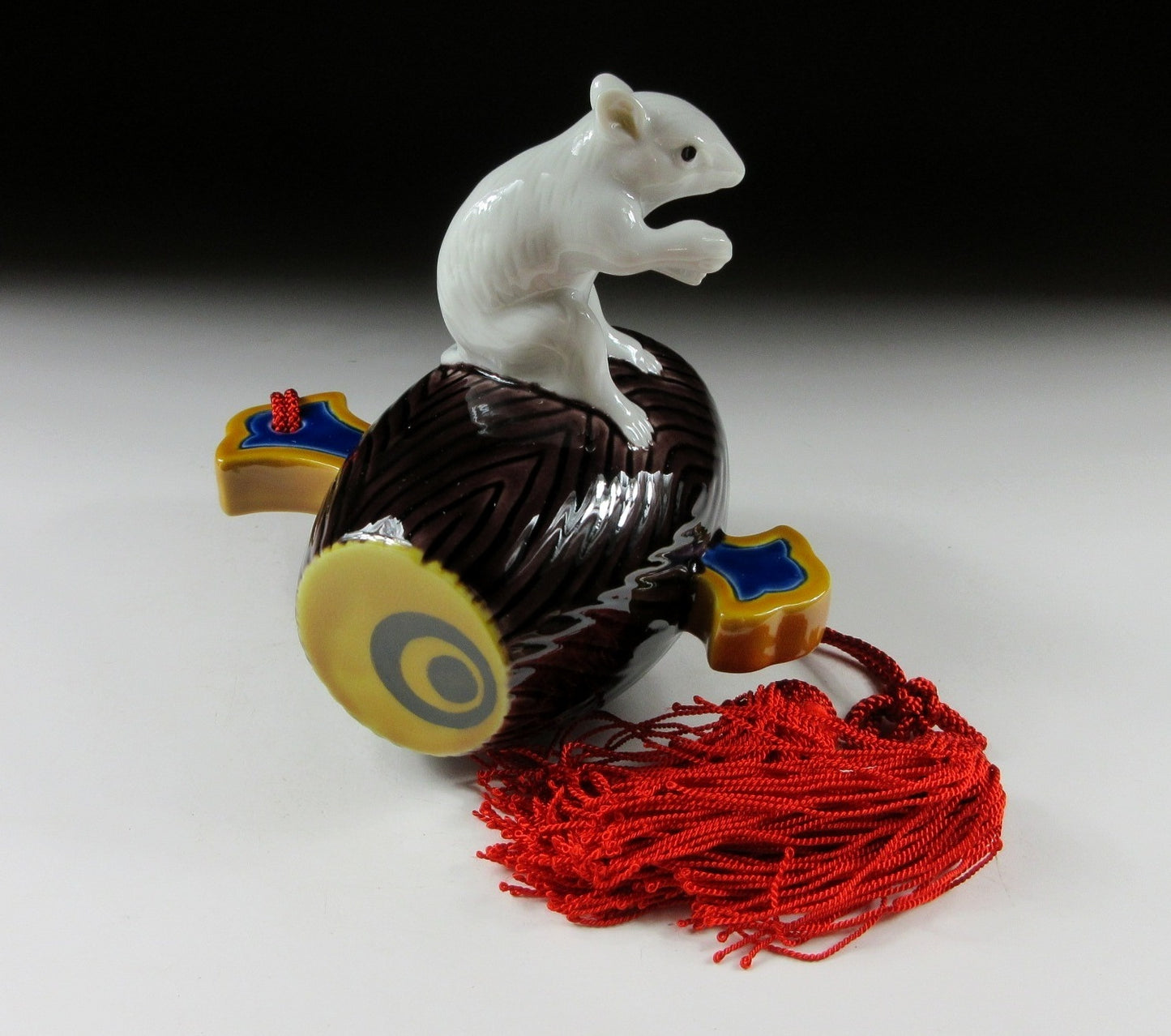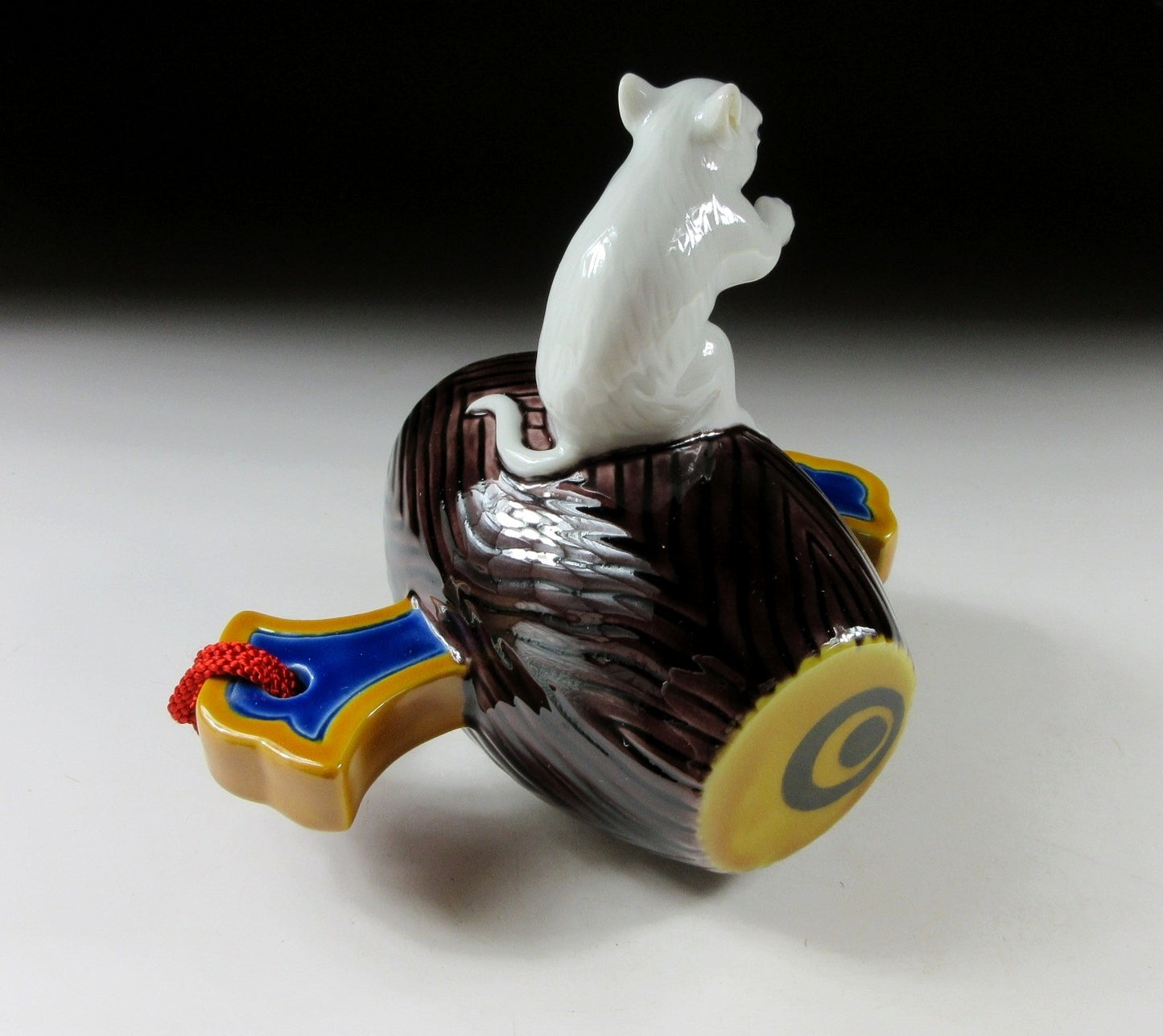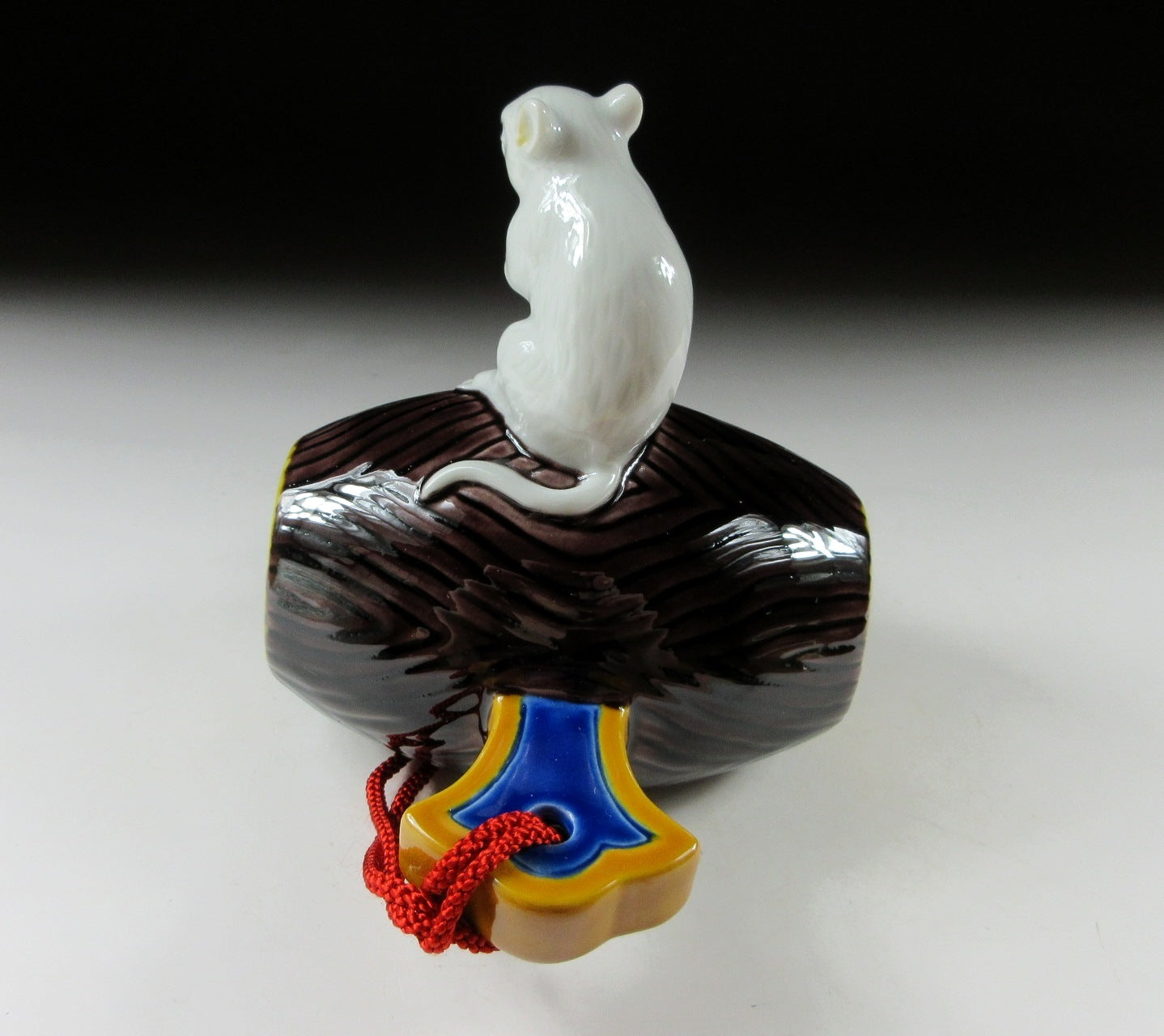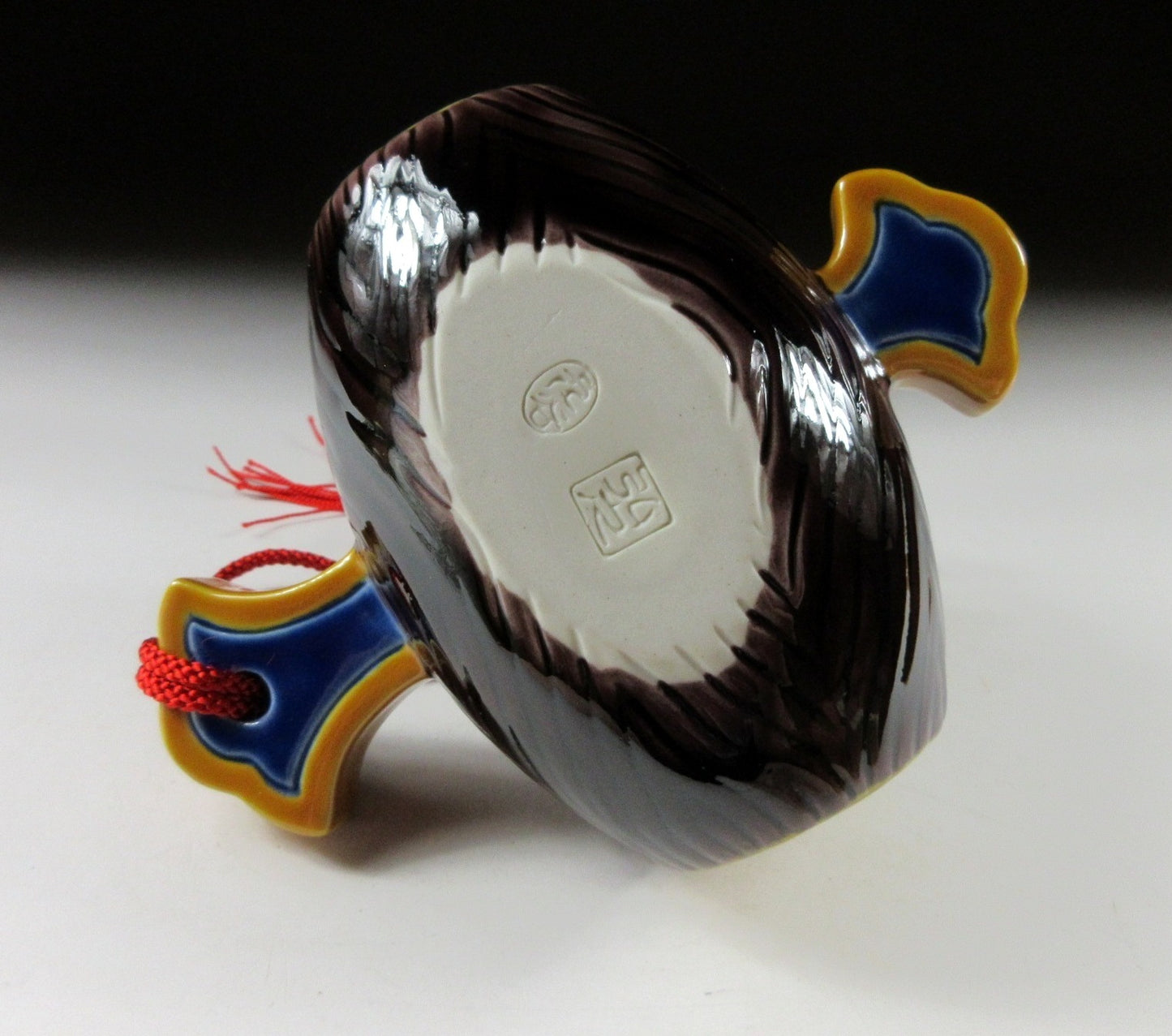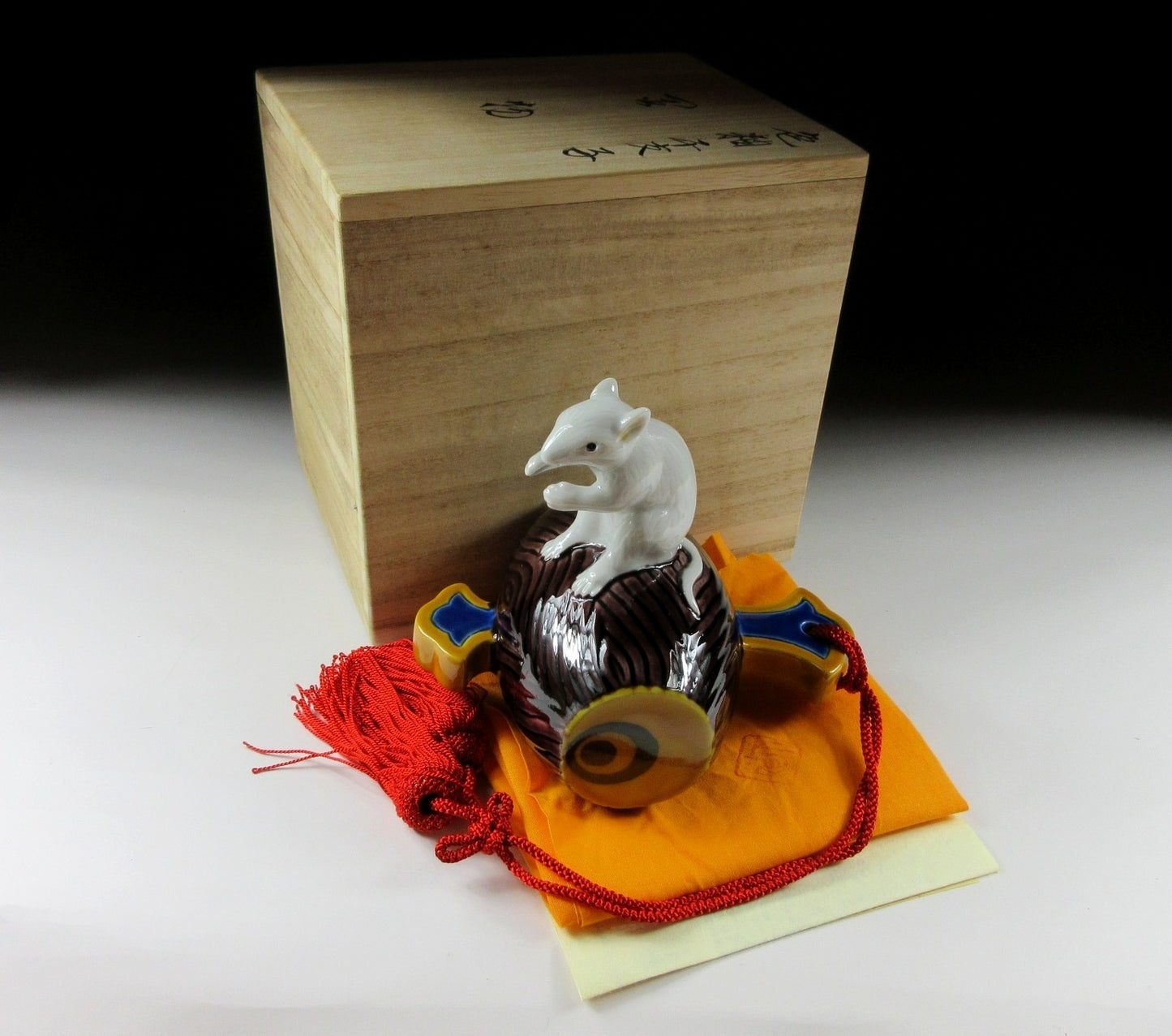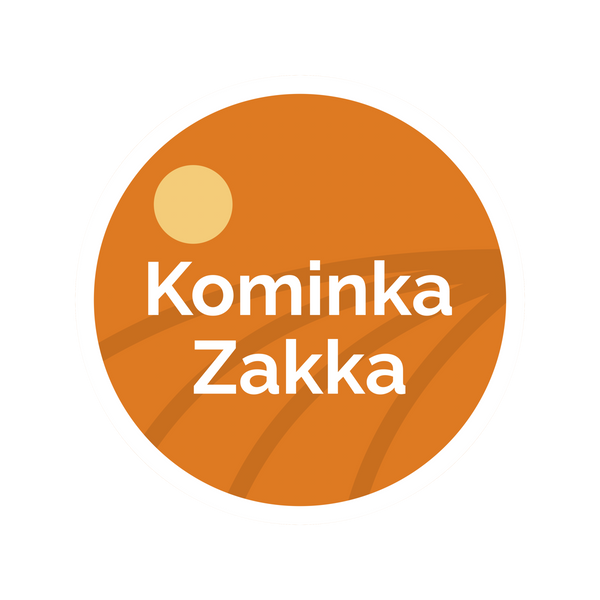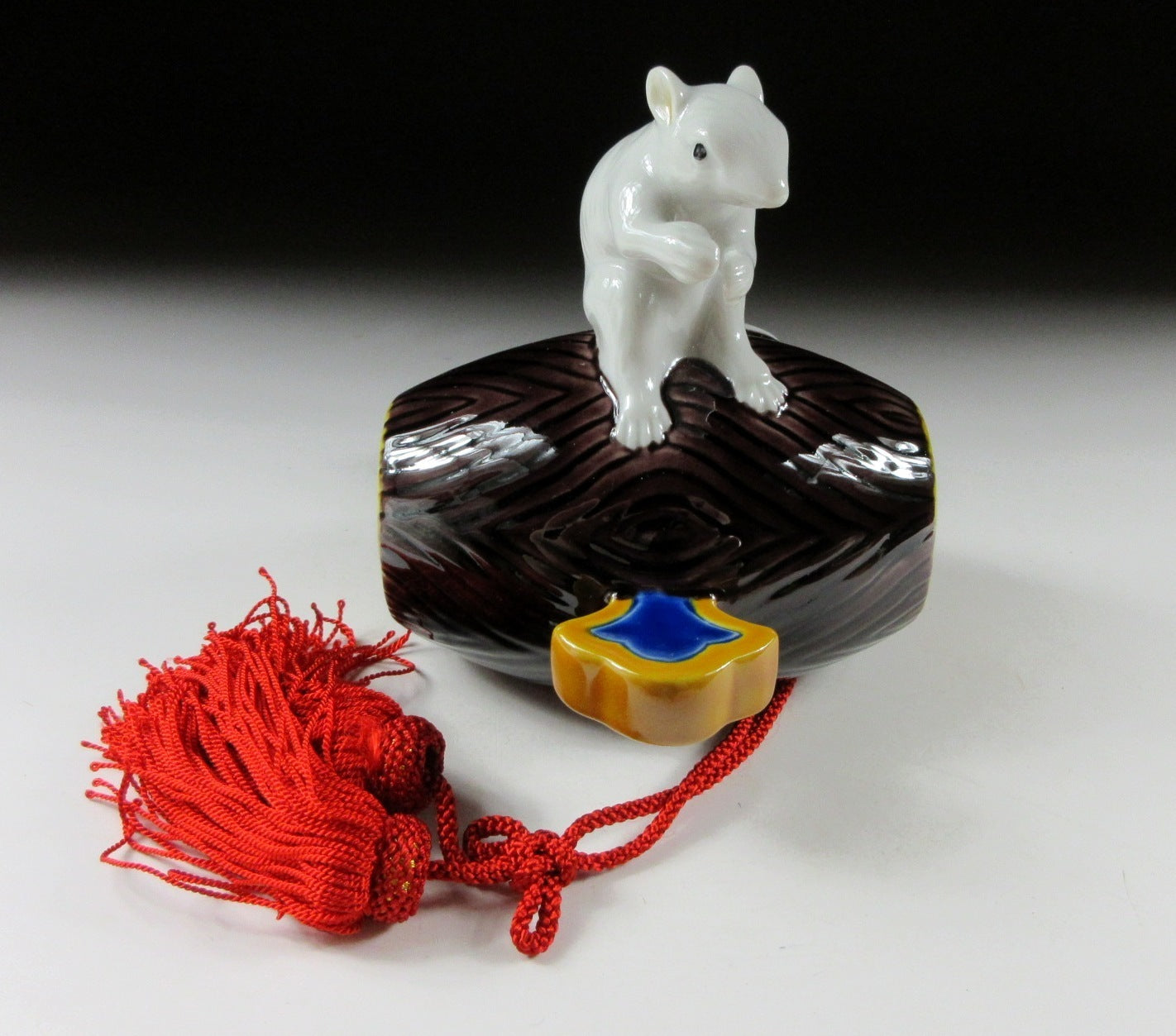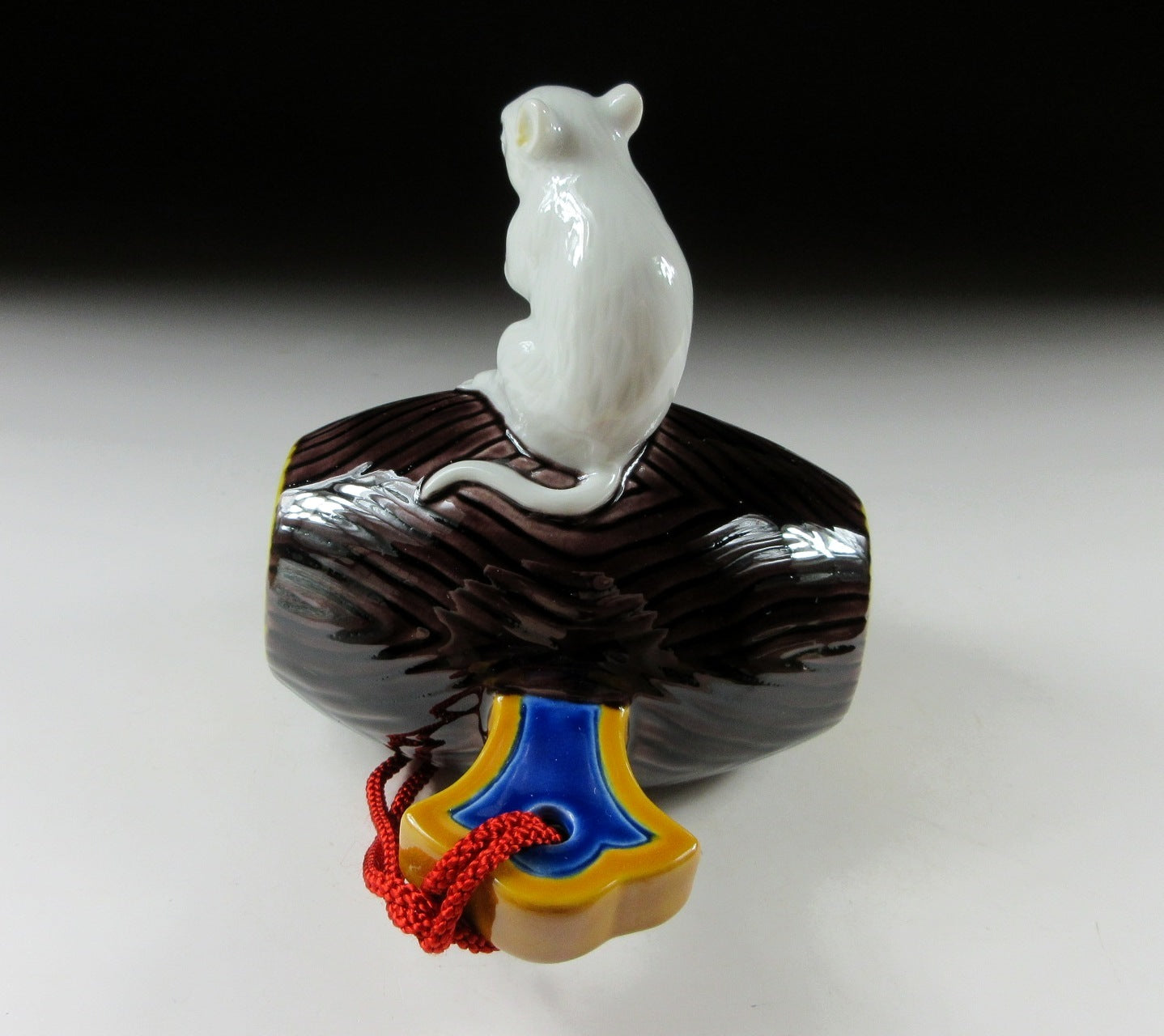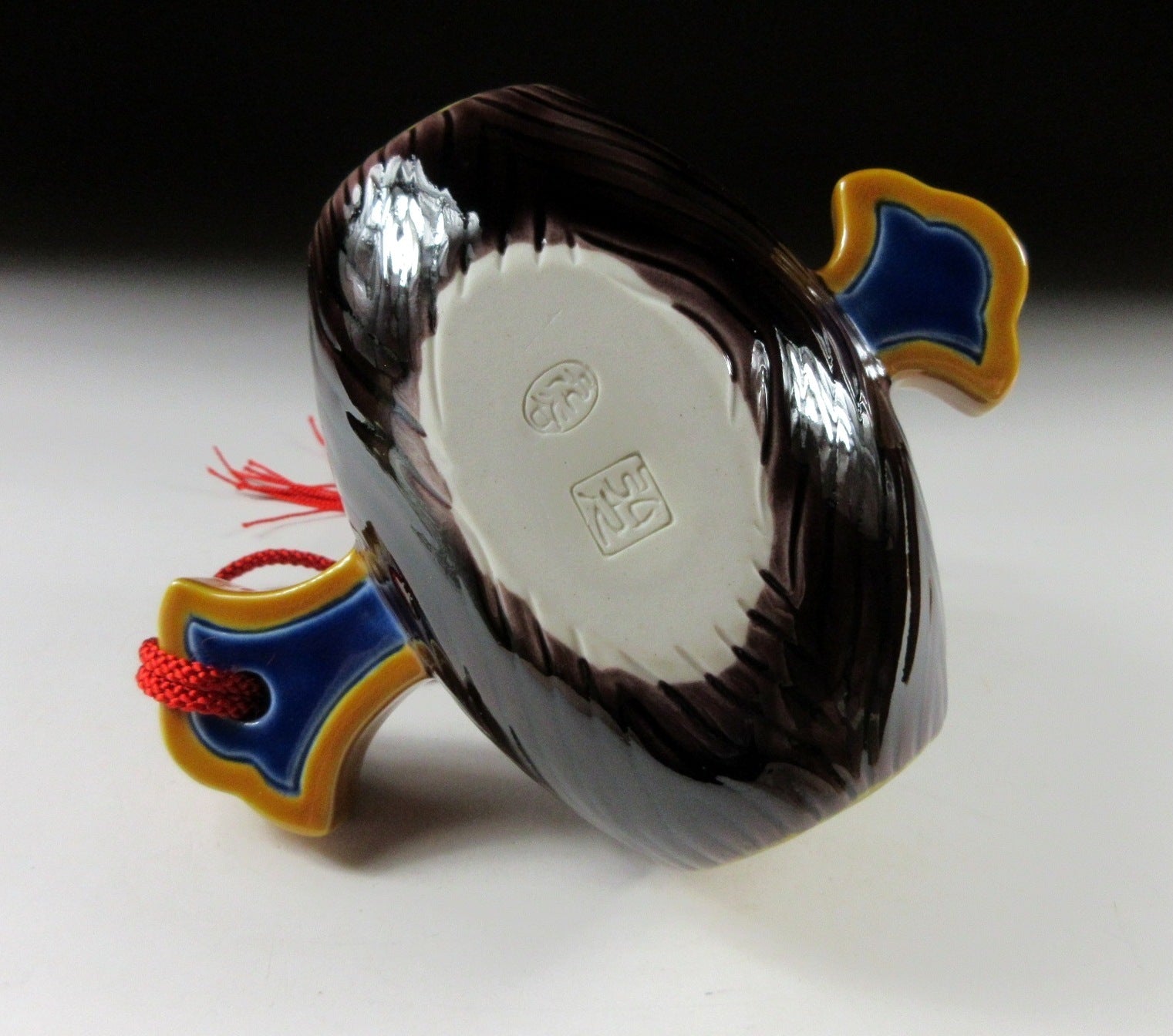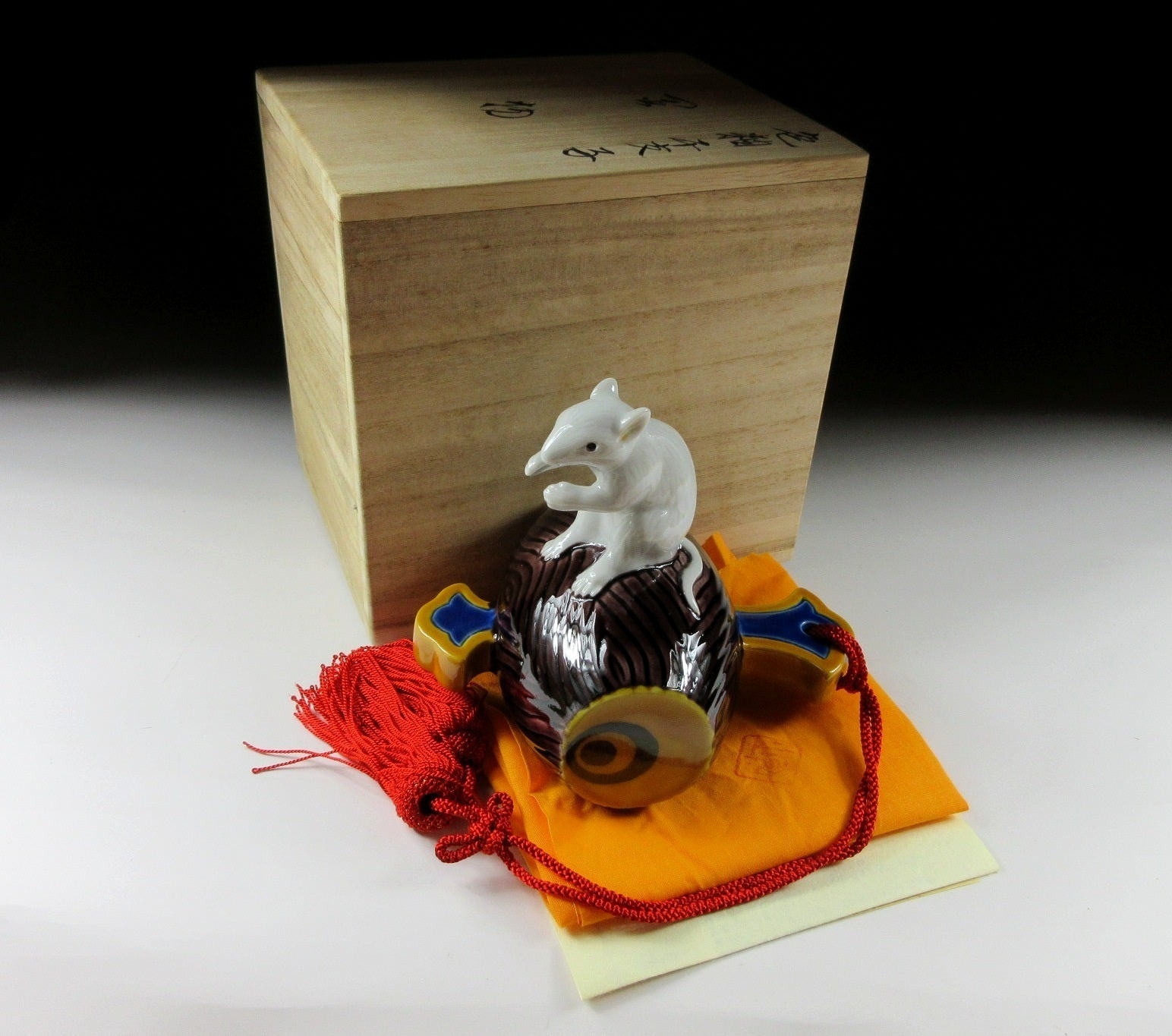Kominka Zakka
Hiroyuki Kida Year of the Rat Okimono
Hiroyuki Kida Year of the Rat Okimono
Couldn't load pickup availability
*SHIPPING OPTIONS VARY DEPENDING ON THE DESTINATION, PLEASE SCROLL TO THE END OF THIS LISTING FOR MORE DETAILS.
This listing is for a Kutani-ware rat okimono made around 20 years ago. It is made from a slip mould and features a white rat perched on top of an uchide-no-kozuchi mallet of fortune. It is believed that striking an uchide-no-kozuchi will bring anything you wish for, thus making it a common sight at New Year. There’s also a long red tassel attached to the end of the mallet, red being a lucky colour in Japan. This piece was most likely made to commemorate the Year of the Rat back in 1996. The stamps of the potter can be found on the bottom, and it comes with its original signed wooden storage box. It also comes with a stamped yellow wrapping cloth for when the item is not in use, as well as a Japanese language profile about the potter.
Hiroyuki Kida (b.1944) is a highly regarded Kutani-ware potter from Ishikawa Prefecture. In 1977 he received the Grand Prize for a piece titled “Dialogue” at the 5th Chunichi Art Exhibition, and 1979 he received the Minister of Education Award at an exhibition sponsored by the Agency of Cultural Affairs (the Minister of Education Award is the top honour). In 1991 he received an award at the Nikko Exhibition, and in 1995 he received a special award at the 27th Nitten Exhibition. In 1998 he was selected to become a judge at the 8th Nikko Exhibition, and has served as a judge a total of five times since then. In 2008 he was presented with the Chairpersons Award at the Nikko Exhibition. He is a full time member of Nitten, the Japan Art Crafts Association, and he serves as Director of the Prefectural Ceramic Arts Association. **Fellow sellers, this information was researched by Kominka Zakka and CANNOT be used in your own listings.
Kutani refers to porcelain ware made in the town of Kutani, in modern day Ishikawa Prefecture. This type of porcelain ware is known for its vivid colours and distinct designs, which in many cases can cover the entire surface. These designs were influenced by Chinese ceramics, paintings, and textiles. Kutani-ware can be broken into the following types: Ko-Kutani (around 1650-1700), Mokubei style (around 1805-1817), Yoshidaya style (1818-1829), Iidaya Style (1830-1845), Eiraku style (1865-1868), and the Shoza Style (1860-1880). Typical decorating techniques include the Ao-Tsubu pattern with raised blue dots, Saiyu Glazes (red, green, yellow, purple, blue), the Yuri-kinsai technique of using gold leaf and gold powder under transparent glaze, and the ginsai technique of using silver leaf and silver powder under transparent glaze.
Japanese okimono figurines are decorative items used for display purposes. Junishi okimono are those commemorating the twelve animals and mythological beasts from the astrological calendar. The Japanese astrological calendar is known as eto, and the twelve creatures are called junishi. The Zodiac’s popularity peaked during the Edo Era, and it was then that junishi okimono production became more widespread. These days, potters and production kilns produce hundreds of junishi each year to welcome the coming New Year. These are often displayed in shops, restaurants, people’s homes, and in tea rooms.
Sizes
Box: H.26.8cm (10.5”) x 17.8cm (7”) x 14.5cm (5.7”)
Okimono: H.12.4cm (4.8”) x 11cm (4.3”) across x 13cm (5.1”) from back to front
Condition
It’s in very good condition with no chips or cracks.
THESE ARE SHIPPING ESTIMATES BASED ON THE CURRENT GLOBAL SITUATION
**Germany, France, Greece, Spain, Poland, Austria, Slovakia, Lithuania, Slovenia: NO SHIPPING. Very strict and expensive packaging laws in place and we are not licensed to send products to these countries. We have no plan to register at this time because the process is in some cases very expensive and complicated, plus each country has its own set of regulations and application process.
**USA, UK, Canada, Australia, New Zealand, Switzerland, Norway: Airmail Small Packet (approx. 15-28 days). Combined shipping available up to 2kgs for Airmail Small Packet (please send us a message).
**Asia: Airmail Small Packet (approx. 15-21 days). Combined shipping available up to 2kgs for Airmail Small Packet (please send us a message).
**Central Asia, Middle East, South Africa, Brazil, Mexico: EMS Express 10-15 days.
**Russia: No shipping methods available.
Share
